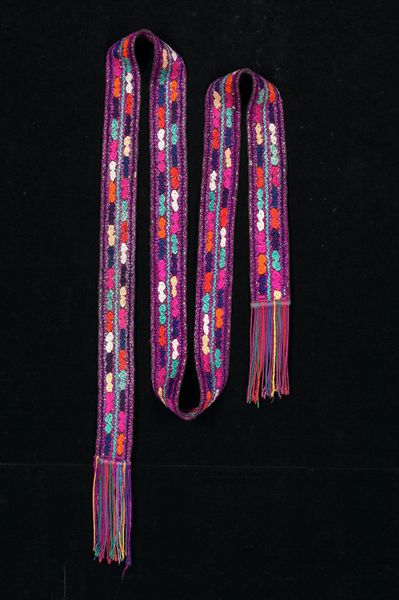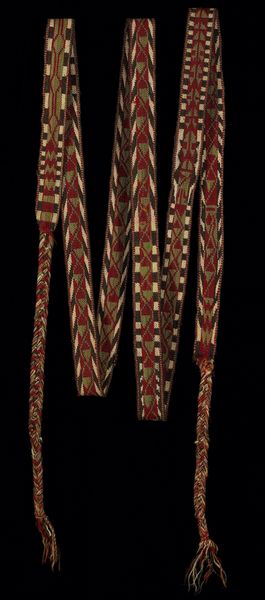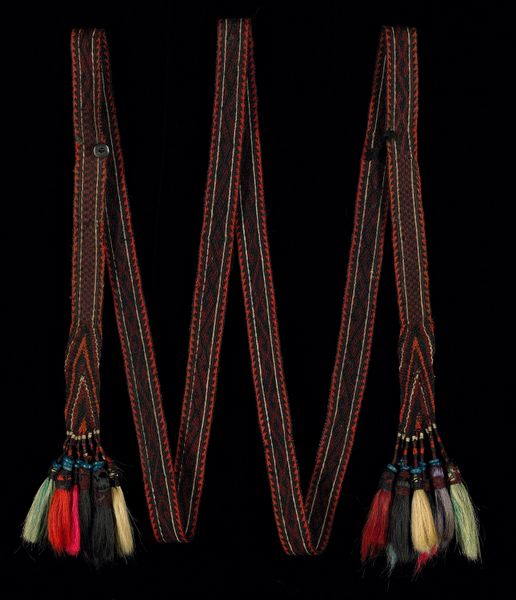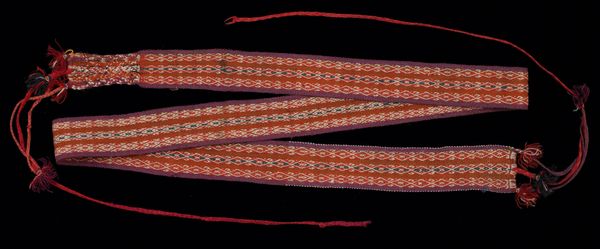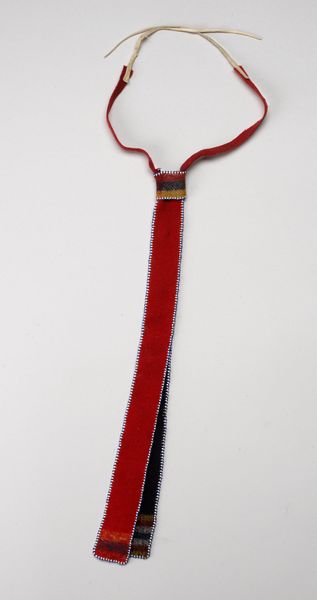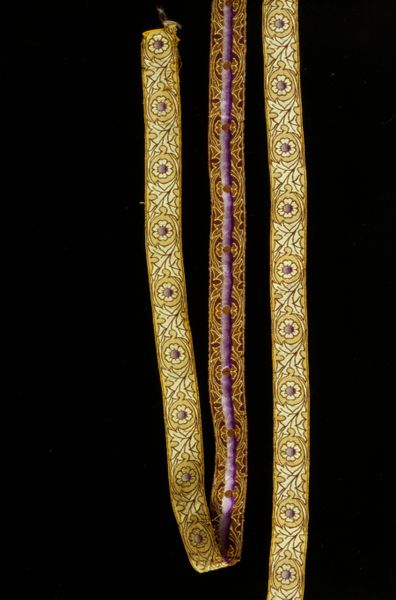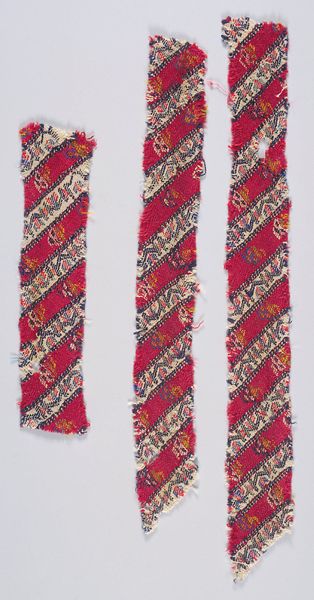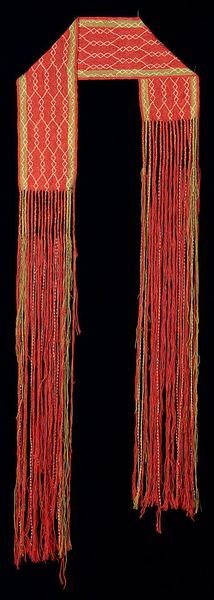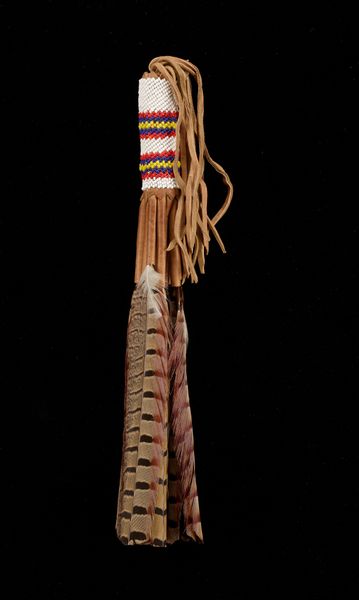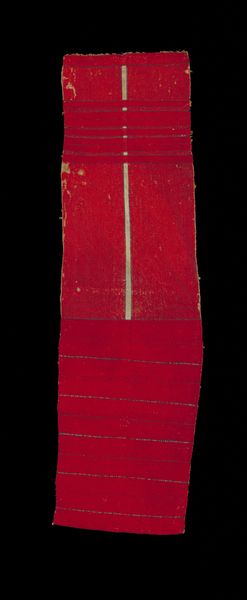
fibre-art, silk, weaving, textile, wool, cotton
#
fibre-art
#
silk
#
weaving
#
textile
#
wool
#
geometric pattern
#
geometric
#
geometric-abstraction
#
cotton
Dimensions: 103 x 1 1/4 in. (261.62 x 3.18 cm)
Copyright: Public Domain
Curator: Here we have a woman's belt dating to around 1950, though the maker is unknown. It’s a woven piece utilizing a blend of fibres, including wool, silk, cotton, and what appears to be a synthetic fibre as well. The Minneapolis Institute of Art holds this piece within its collection. Editor: It's striking. The red and blue geometric patterns create a very active, almost festive rhythm down the length of the belt. The tassels add a playful touch. Curator: These belts served as more than just functional items, and played an important social function in mid-century communities. Adornment served as an indicator of social roles and economic standing. To have and display something with this much detail and care, and utilising diverse and even costly materials would say a lot about a woman’s position. Editor: Looking at the motifs, there is a sense of symbolic language here. Squares, circles, triangles... they appear consistently, almost like glyphs or perhaps even a stylized rendering of tribal iconography that speaks to a connection with something older. It presents a deliberate visual statement about continuity with the past. Curator: Indeed. And in its construction we see both adherence to tradition and an embrace of new possibilities through the introduction of synthetic elements into traditional weaving practices. This melding of old and new really says a lot about the socio-cultural landscape in the 1950s as well. Editor: I am quite interested in how the visual repetition interacts with cultural memory and identity, especially during that period when rapid social changes were taking place. Was this designed to intentionally assert the endurance of particular values and imagery against the background of modernization? Curator: That is a valid observation, particularly when considering its eventual institutionalisation in museum contexts where these objects serve as documents and icons of cultural history. Its display also changes and enhances these symbolic associations with each curatorial decision, for instance by exhibiting this woman's belt in a collection celebrating mid-century textiles. Editor: Right, which then begs the question: what narrative are we participating in perpetuating as modern viewers of this remarkable item of woven heritage? Curator: A pertinent thought for sure. It forces one to ponder all these layers and implications when standing before such a deceptively simple object.
Comments
No comments
Be the first to comment and join the conversation on the ultimate creative platform.
